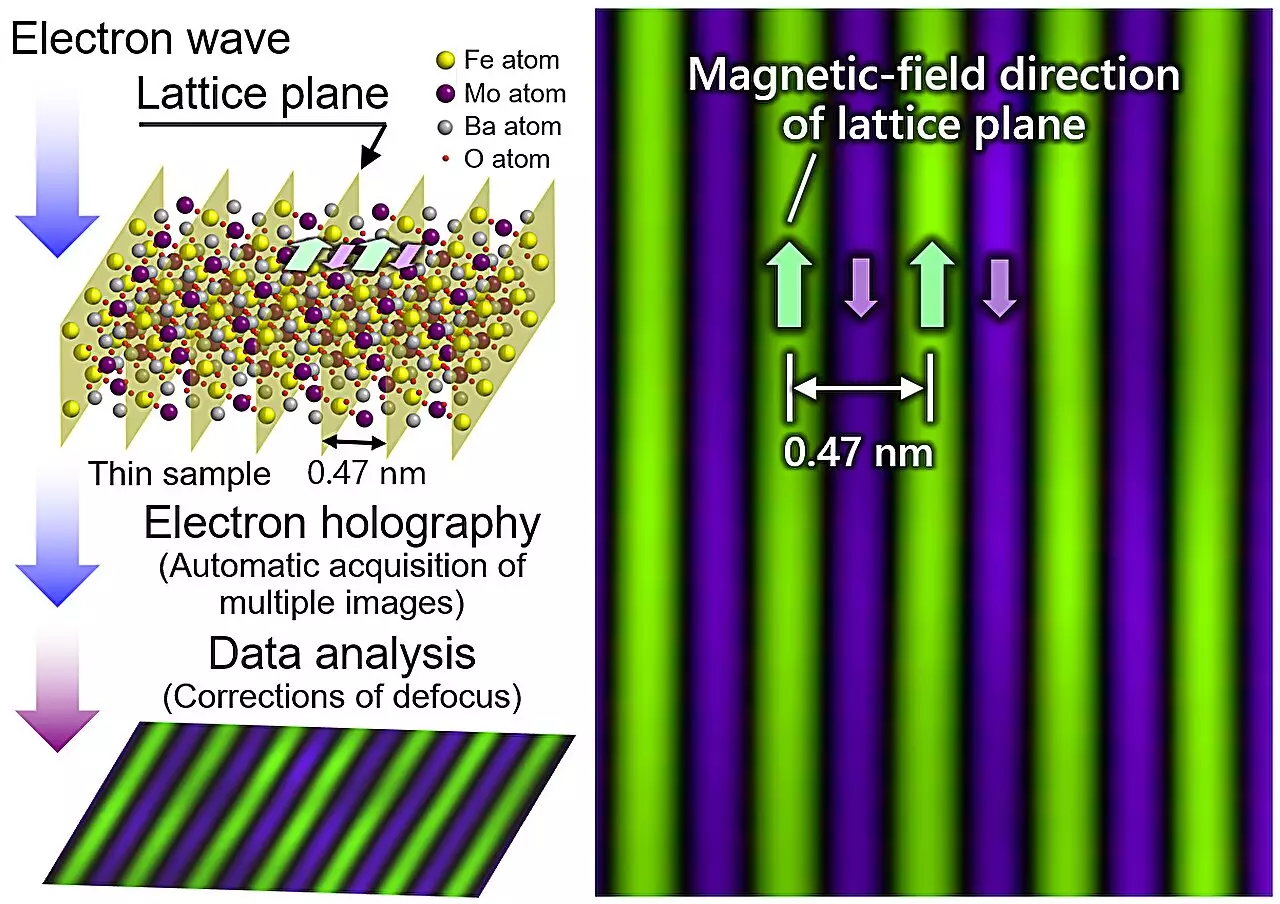Recent breakthroughs in the observation of magnetic fields at incredibly small scales have opened up new possibilities for understanding the behavior of materials at the atomic level. A research team from Japan, in collaboration with several institutions, has made significant progress in visualizing the magnetic fields of individual atomic layers within crystalline solids. This achievement has the potential to revolutionize the development of high-performance materials with tailored characteristics for a wide range of applications.
The research team developed a system to automate the control and tuning of the atomic-resolution holography electron microscope used in the study. This advancement significantly accelerated the imaging process, allowing for the acquisition of 10,000 images over 8.5 hours. By performing specific averaging operations with these images, the team was able to reduce noise and obtain clearer images containing distinct electric field and magnetic field data. This automated approach represents a major step forward in the efficiency and accuracy of data acquisition for studying magnetic fields at the atomic level.
One of the key challenges addressed by the research team was the correction for minute defocusing, which could introduce aberrations in the acquired images. By implementing a technique to correct for defocusing due to minor focus shifts, the team was able to analyze reconstructed electron waves and eliminate residual aberrations. This breakthrough enabled the researchers to clearly visualize the positions and phases of atoms along with their magnetic fields, providing unprecedented insights into the behavior of crystalline materials at the atomic scale.
Through their innovative approach, the team was able to surpass the previous record for observing magnetic fields at atomic layers, achieving an unprecedented resolution of 0.47 nm. This milestone in imaging technology opens up new possibilities for directly observing magnetic lattices in specific areas of materials, such as interfaces and grain boundaries. The ability to explore electron spin configurations in magnetic materials at such a high resolution has the potential to unveil hidden phenomena and advance our understanding of the fundamental properties of materials.
The research team anticipates that their achievement will have far-reaching implications for various fields, from fundamental physics to the development of next-generation devices. The atomic-resolution holography electron microscope developed in this study is expected to be used by a wide range of researchers and scientists, contributing to advances in areas such as high-performance magnets and highly functional materials. Ultimately, these advancements could play a crucial role in the transition towards a carbon-neutral society by supporting decarbonization efforts and energy-saving technologies.
The research team’s breakthrough in observing magnetic fields at unimaginably small scales represents a significant milestone in imaging technology with broad implications for science and technology. By pushing the limits of resolution and efficiency in data acquisition, the team has paved the way for new discoveries and innovations in materials science, electronics, and energy generation. The future holds promising opportunities for further exploration and application of these groundbreaking technologies in pursuit of a more sustainable and technologically advanced society.


Leave a Reply